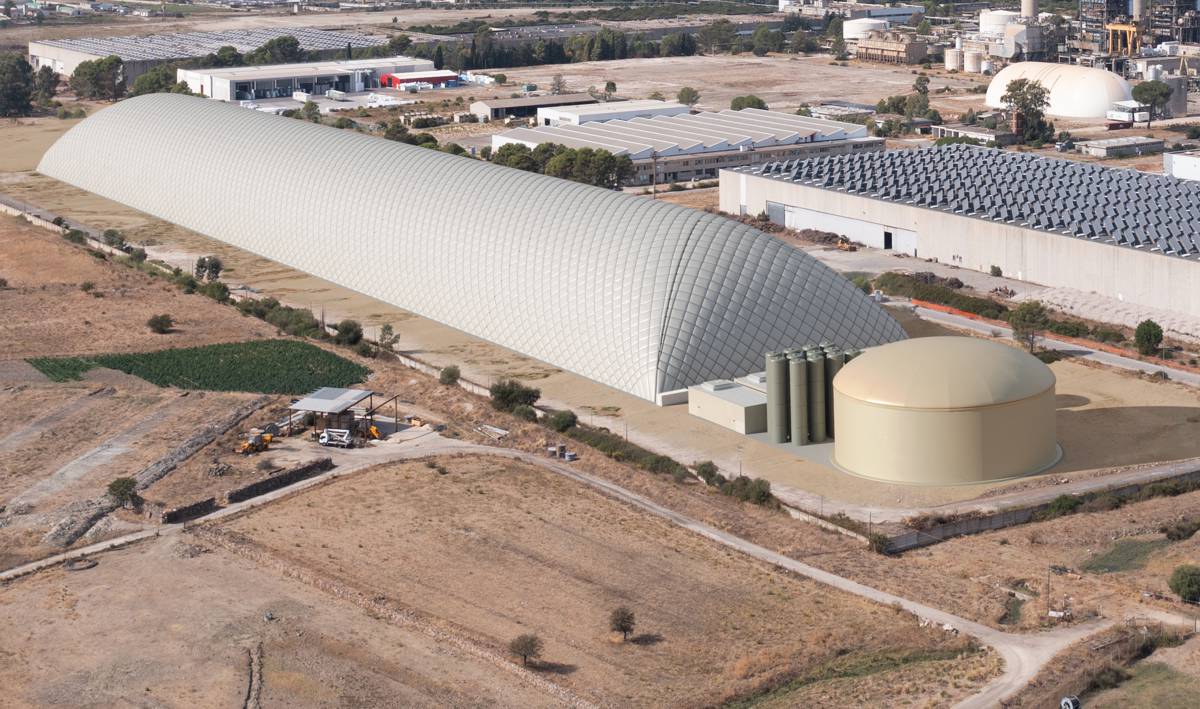Is artificial intelligence the future of construction?
According to McKinsey, AI is the next frontier for construction technology. Without a doubt, the construction industry has still a long way to go before we can claim with confidence that artificial intelligence solutions have been properly implemented in the sector.
The good news is that construction is an industry with tremendous potential. The total worth of the sector is estimated at $10 trillion per year, while the productivity gap due to the lack of digitalisation in the industry is calculated to $1.6 trillion.
That being said, it quickly becomes evident that construction needs to change. A digital shift will pave the way for the rise and successful implementation of artificial intelligence in construction.
AI is the next frontier for construction technology!
Conor Gantly, Design & Quality Manager, focused recently on the future of AI in construction in his Project Dissertation for the Degree of MSc in Construction Management at City, University of London.
In the Dissertation, Mr. Gantly analyses the current state of AI implementation in construction and presents some powerful findings with regards to the ways in which construction companies perceive the advent of artificial intelligence in the industry.
An introduction to the research
Starting from what was the catalyst for this research, Conor Gantly explains that construction is the industry with the greatest impact on the world around us. No matter what you do or where you are on the planet, your life is heavily connected to construction.
Furthermore, construction is a strong indicator of the economic stability and growth of every country. With that in mind, it is vital that the industry starts to perform according to its true abilities and potential. At the moment there is no doubt that the construction industry is under-achieving, as Sir John Egan suggests in his report “Rethinking Construction”.
With that in mind, Conor Gantly set the primary focus of his research on how construction can accelerate its digitalisation, realise its full potential and avoid the mistakes of the past. The use of artificial intelligence can help a lot in that direction if implemented correctly.
There is no doubt that AI applications can boost efficiency on site and raise the bar for the industry in terms of productivity, risk reduction and overall construction performance. Of course, this won’t be an easy journey for the industry given the mistrust on contractual relations and the biggest enemy of all which is the resistance to change.
Nonetheless, artificial intelligence can function as the fuel for a meaningful change in how stakeholders in construction design, collaborate and operate. Especially in the United Kingdom and Europe, in general, a more open mindset toward digitalisation has started to become apparent. And the findings of the study, despite its small sample size, seem to give a good overview of the sector.
The Need for Artificial Intelligence in Construction
Now that we have a better understanding of the research focus, it is time to examine why artificial intelligence is deemed to be necessary for the construction industry. We will focus on the case of the United Kingdom as it was the main focal point in Mr. Gantly’s study.
In a nutshell, here are some of the biggest pain points for construction, as mentioned in the dissertation.
Shrinking workforce
Skilled labour shortage is one of the most crucial problems for the construction industry on a global scale. The example of the UK industry is quite representative.
The UK market is battling against the fact that the total workforce is becoming older. This element is extremely important when we refer to labour-intensive industries, such as construction.

AI could offer solid solutions to this problem through the automation of labour and time-intensive tasks such as programme creation, cost estimation, resource management, health and safety management and many more.
But the age isn’t the only factor which has paved the way for this workforce shortage. Political circumstances can also have a critical impact on workforce availability.
Brexit could create a big problem for the construction sector with regards to the workforce. If a hard Brexit is decided, the United Kingdom will be in danger of losing 215,000 workers.
Low-profit margins
Low-profit margins have always had been a serious source of pain for UK construction compared to the other industries. As mentioned in the research, “17 UK companies with a turnover of over £2.5 Billion, had an average EBITDA margin of 2.6% in 2017”.
In short, the most noteworthy factors which have led to this problematic situation could be summarised to the next five:
- Competitive tendering
- High bidding cost to return ratio
- Increased costs due to sterling decline
- Low productivity
- Poor risk management
The implementation of artificial intelligence technologies to the construction process could eliminate many of these factors and adding much more accuracy on the way people in construction work and build.
Risk management
While risk management is one of the factors that lead to low-profit margins, AI could potentially provide significant help to reduce risks.
Risk management as an aspect of construction management is also something that needs special attention. There are simply so many parameters that should be taken into serious consideration in a construction project and an effective risk management system could make a real difference there.
More analytically, artificial intelligence could function as the objective source of truth for the industry which would eliminate any optimism bias and provide valuable data which can show the way for future projects.
Sustainability
Last but not least, the issue of sustainability. As underlined in Conor’s research, “the Global Status Report 2017 (Abergel, T. Dean, B. & Dula, J., p.14) reveals that the construction industry was responsible for 11% percent of global C02 emissions in 2015, and combined with the 26% of emissions generated by the buildings themselves, leads to the built environment contributing to 37% of global emissions”.

That is a strong wake-up call for the construction sector. A substantial paradigm shift on the way all stakeholders in construction work is required. With the help of AI, smart buildings which are resource and energy efficient both in terms of construction and use later on could become the norm.
Such an approach could be beneficial both for the construction industry and the people who work or live in the buildings.
The Challenges Facing AI Implementation in Construction
Despite the various problems that construction is currently facing, the successful implementation of AI technologies is not expected to be easy.
There is a number of obstacles that the industry will have to overcome.
Culture
Mistrust on contractual relationships and power of habit are two of the most crucial parameters that should be taken into consideration when it comes to AI implementation in construction.
It is expected that digital technologies will come across heavy scepticism until it is proven that they can provide value. Of course, this scepticism isn’t only the result of resistance to something new.
The fact that there haven’t been so many AI success stories in construction yet plays also a substantial role in that direction.
To make matters worse, it seems that at the moment there is a big disconnection between the board room and the construction site when it comes to implementing these new technologies.
On the one hand, the implementation of artificial intelligence in construction will come from the top down but on the other hand, it is vital that people who are going to use this technology on site have a good understanding of its benefits. Only then, the full-scale implementation will be a success.
Ageing workforce
The age of the workforce is one more challenge that can hinder the implementation of AI in construction, according to Conor Gantly. The construction industry faces serious problems to recruit young workers.
This can be a strong indication that construction has a lot of work to do when it comes to its profile. The good news is that the rise of digital technologies can help the sector redefining itself and turn to a promising destination for an ambitious and tech-savvy workforce.
With that in mind, the UK government has started to focus its efforts on bringing more workers in the industry by 2025, while also investing in training programmes for the industry’s workforce.
Cost
Without a doubt, upfront costs can also be a challenge for the spreading of artificial intelligence technology in the construction industry. This obstacle can be even higher if we take into account the fact that this type of technology is still at very early stages and hasn’t entirely proven its value yet.
In the long term, though, things will get better as this type of technology will be tested on a larger scale and there will be more tangible results of its use in the industry.
The training of the project team on these technologies can also play a role in raising the cost of AI implementation. It’s not all bad though. As pointed out by McKinsey and Company, the investment in R&D has started to increase significantly in the course of the last years which help decisively in reducing the digital adoption cost in construction.
Data collaboration
Construction is producing a vast amount of data which either goes to waste or isn’t used properly. To great extent, that is the result of working in a highly fragmented supply chain and by extension industry.
Many stakeholders in construction continue to work in silos which makes things much tougher when it comes to extracting valuable project knowledge from the available data. That being said, minimising delays, keeping the budget under control and improving the quality of the countless processes becomes much more challenging when there is no data you can use.
The rise of digital technologies can change that for the industry. As Conor Gantly notices, “tackling this fragmentation of data can be achieved by enforcing a common data environment (CDE) and standardisation of data across the industry”. The first steps in that direction have already started to become visible with the use of IFC (industry foundation class) but there is still a long way to go.
Legislation
As technology progresses, it becomes more and more difficult for legislators to keep up and make sure that the right legal framework is in place. Especially if we take into account the different rules and regulations that might apply to different countries things can get even more confusing.
In many cases, this legal gap may lead to costly project disputes, a lot of confusion and unnecessary project delays and budget overruns.
Data security
Data security can be a serious bottleneck for the construction industry in the future. According to estimations by the UK Cabinet Office, it is expected that the construction industry will have to spend £150 million per year to fight cybercrime.
This might sound a lot but construction companies have in their possession many sensitive data of employees, contractors, clients, and State or military-related projects. Construction is still on a very early stage of its digital journey but data security is one of the most notable issues that should be addressed.
The current state of AI in construction
One of the most interesting parts of Conor Gantly’s research is, of course, its actual results. Both quantitative and qualitative methods were used during this long process. The empirical data was collected in two ways: an online survey and a semi-structured in-depth interview with a respondent of the survey. Construction professionals and members of the public with a clear connection to the industry were targeted in an effort to increase the credibility and precision of the results.

The United Kingdom (73.2%) and the EU (17.1%), in general, were the main areas of focus for the study which regardless of its small sample size (41 respondents), we believe that it depicts with precision the true state of AI in construction.
Without further ado, here is a rundown of the current state of artificial intelligence in construction.
Confidence in using technology
One of the first and highly encouraging findings had to do with the confidence of construction professionals in using technology.

As you can see from the diagram above, nearly 66% of the participants declared that their confidence level in using technology is 5/5, while 26.8% chose 4/5 and 7.3% replied with 3/5. This result shows that there are many in the industry who are capable of handling the arrival of digital technologies and have potentially a positive attitude toward them.
This might also, of course, be related to their age given the fact that 68.3% of them were between 25 and 49 years old. That is a strong indication for where the industry might be heading within the next two decades.

Time spent on repetitive tasks
Another factor which in the long run may act as a catalyst for change in construction is the need for automation. One way to measure this is by calculating the time spent by construction professionals on non-technical and/or repetitive tasks.

Based on the findings of the survey, we can see that on average a person will dedicate 2.16 hours per day on repetitive tasks which on a yearly basis accounts for 564 hours.
With that number in mind, the following calculation by Mr. Gantly shows the decisive financial impact that successful AI implementation could have on construction: “If we use Viechnicki and Eggers (2017) upper estimate of how much time AI can save us (30%), we can calculate that AI could potentially reduce each worker’s yearly time spent on repetitive tasks by 188 hours.
If we assume an average construction industry salary of £40,000, a very basic calculation can predict that AI could save £3,609 of working hours, per worker each year.”
Challenges in filling open positions
We talked before about the issue of skills shortage in the construction industry and at this point, it’s time to examine what the survey participants said with regards to this topic.
Strangely enough, 53.7% of the respondents mentioned that their company can fill open positions without any problems. To the contrary, only 14.7% of the participants mentioned that workforce shortage was a problem for their organisation.
As Conor Gantly underlines, these results require further examination since they contradict the general discussion in the sector at the moment.

Resistance to change: A challenge for AI or not?
Another interesting and very contradicting finding came up during the examination of the company’s culture. The vast majority of the survey participants replied that 82.9% of the people working in the organisation are open to change and new methods of working.

What’s interesting, though, is that later at the same research they identify resistance to change as one of the biggest problems for the sector. This is an emphatic indication that the industry is highly disconnected from the people working in it.

The impact of AI in construction
Could artificial intelligence be a disruptive force for construction? That is a question which received mixed responses as you can see below:

What is more interesting, though, is examining the various areas within construction where the survey participants believe that AI can make a difference.

Administrative tasks and general efficiency seem to be the areas which will be benefited the most according to the respondents. That’s not a big surprise if we consider that the first solid step of AI in construction is expected to be in eliminating repetitive tasks that drain a lot of time and energy.
Risk reduction, cost, and quality are coming after repetitive and administrative tasks as the areas where artificial intelligence could have a very positive impact on the construction industry.
The time frame for the advent of AI in construction
How soon will AI be meaningfully implemented in the construction industry? That’s really hard to tell but it’s very interesting to see what people from the industry think on the topic.
As shown by the following numbers, the construction industry seems to be sceptical when it comes to when the sector will be ready to fully leverage AI technologies.

More specifically, 29.3% of the respondents believe that AI won’t be successfully implemented in construction for 15+ years, while 22% considers a period of 10-15 years as a realistic time frame for it.
These results can be worrying because they suggest that the industry isn’t well informed about the potential of AI in construction. There are already some promising examples of meaningful AI implementation in the industry (eg. Smartvidio, Volvo Density Direct, and ALICE) which haven’t attracted yet the attention they deserve.
The lack of discussion with regards to AI implementation in construction can be also verified by the following pie chart which depicts how many of the respondents are aware of any artificial intelligence systems being implemented within their organisation.

Only 22% of them gave a positive response to this question which suggests that they either aren’t well-informed or that their organisation isn’t actively working on AI at the time being. Regardless of what may be the right answer that’s a statistic that the construction industry needs to take into account moving forward.
Final thoughts
All in all, this greatly informative research by Conor Gantly highlights that the construction industry is ready for a meaningful digital change. AI has the power to bring that change into construction but there are many obstacles that need to be overcome first before we can claim with confidence that the industry has managed to fully leverage AI.
It is expected to be a long and challenging journey for the entire sector but with the right plan and an open mind toward new technologies the digitalisation of construction can be closer than many might think.















